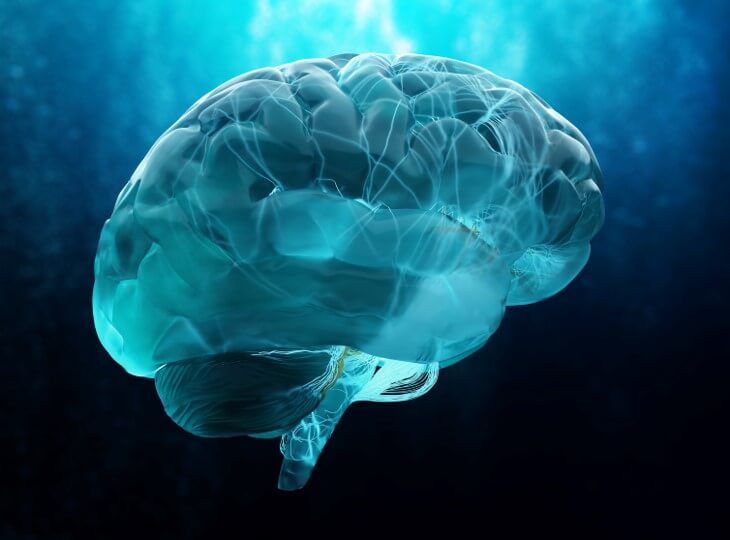
More than a century ago, Alois Alzheimer noted unusual changes in brain fats, which he described as “lipoid granules,” along with the buildup of amyloid-beta (amyloid) plaques and tau protein tangles. These observations led to the identification of Alzheimer’s disease and related dementias. Since then, most Alzheimer’s research has focused on amyloid and tau, while brain lipid abnormalities have received far less attention.
New research from The University of Texas at San Antonio’s Health Science Center (Health Science Center), in collaboration with the University of California at Irvine, shows that changes in brain fats, or lipids, play a major role in Alzheimer’s development and progression. Lipid imbalances can influence how amyloid proteins build up, and certain genes that regulate lipid metabolism are linked to Alzheimer’s risk.

“The brain is a unique organ,” said Juan Pablo Palavicini, PhD, assistant professor in the Department of Cellular and Integrative Physiology and co-lead of the study. “Unlike most other organs, which are rich in protein, more than half of the brain’s dry weight is made up of different kinds of lipids, including cholesterol, phospholipids, and sphingolipids. In Alzheimer’s disease, we see massive disruption of these lipids, yet most studies focus only on genes and proteins.”
The study, published October 15 in Nature Communications, reveals how microglia, the brain’s immune cells, control some of these lipid changes. Depending on how they are manipulated, microglia can either help maintain balance or worsen the disease. The research was co-led by Palavicini and Xianlin Han, PhD, professor in the Department of Medicine, who are both investigators with the Sam and Ann Barshop Institute for Longevity and Aging Studies at the Health Science Center.
Testing microglia’s role
Using a mouse model of Alzheimer’s, the scientists tested two approaches to remove microglia. In one, they treated mice with a drug that nearly eliminated all microglia and in the other, they used genetically modified mice that lacked microglia. These strategies allowed researchers to separate effects caused by microglia from those caused by other brain cells.
“We wanted to understand which cells are driving these lipid changes,” Palavicini said. “Some lipids go up, some go down, but which cell types are responsible? By removing microglia, we could see which changes depend on them and which do not.”
The research team compared results from the mouse studies with post-mortem brain samples from people with and without Alzheimer’s.
They found that amyloid buildup dramatically altered brain lipid patterns. Two groups of lipids stood out: lysophospholipids (LPC and LPE), which are linked to inflammation and oxidative stress, and bis(monoacylglycero)phosphate (BMP), a lipid that helps regulate the cell’s “recycling centers,” called lysosomes. The research team found that a form of BMP containing arachidonic acid (AA-BMP) accumulated near amyloid plaques, and that long-term removal of microglia prevented AA-BMP buildup, showing that microglia drive these changes.
“BMP is still not well understood, especially in the brain,” Palavicini said. “It forms substructures in lysosomes that attract proteins to break down damaged lipids. Without microglia, AA-BMP levels drop, which can interfere with the brain’s cleanup processes.”
Progranulin’s key effects
The protein progranulin, made by both microglia and neurons, emerged in the study as a key lipid regulator. Progranulin levels rise in Alzheimer’s conditions and closely align with AA-BMP accumulation. Removing microglia lowered both progranulin and AA-BMP near plaques, suggesting that microglial progranulin helps regulate lipid balance.
“In the Alzheimer’s brain, rather than lowering BMP, it may be important to maintain or support its levels,” Palavicini said. “Progranulin helps maintain this lipid and protect neurons. Therapies that boost progranulin could potentially restore balance and support brain health.”
Influence from other brain cells
Not all lipids are controlled by microglia. LPC and LPE levels were mostly influenced by astrocytes and neurons. LPC buildup was tied to astrocyte activation and enzyme activity, while LPE increases were linked to oxidative stress and weakened antioxidant defenses.
“Even though we hypothesized microglia were driving the accumulation of these inflammatory lipids, it was actually other cell types, including astrocytes,” Palavicini said. “This distinction helps us understand which cells to target for therapies and shows how complex lipid regulation is in Alzheimer’s disease.”
Microglia protect myelin and neurons
The study revealed that microglia also help maintain myelin, a protective coating around neurons. Genetic removal of microglia under amyloid stress reduced myelin-related lipids.
“The microglia are helping neurons, and if you remove them, neurons seem to experience more oxidative stress,” Palavicini said. “This is why some lipid levels increase when microglia are gone. In most cases, removal of microglia was damaging, which was somewhat unexpected but reveals how critical they are for brain lipid metabolism.”
More complete picture of Alzheimer’s
This research shows that Alzheimer’s is not just about amyloid plaques and tau tangles. It also involves disrupted lipid balance, with microglia, astrocytes and neurons each playing different roles. Microglia maintain protective lipids like BMP and support myelin, while astrocytes and neurons drive other changes, including lysophospholipid accumulation and oxidative stress.
“Understanding which cells regulate which lipids opens the door to more precise therapies,” Palavicini said. “By targeting lipid balance along with amyloid and tau, we can develop better strategies to protect neurons and potentially slow or prevent Alzheimer’s disease.”
Xu, Z., Kiani Shabestari, S., Barannikov, S. et al. Microglia-specific regulation of lipid metabolism in Alzheimer’s disease revealed by microglial depletion in 5xFAD Mice. Nature Communications, 16, 9156 (First published online October 15, 2025). https://doi.org/10.1038/s41467-025-64161-z

